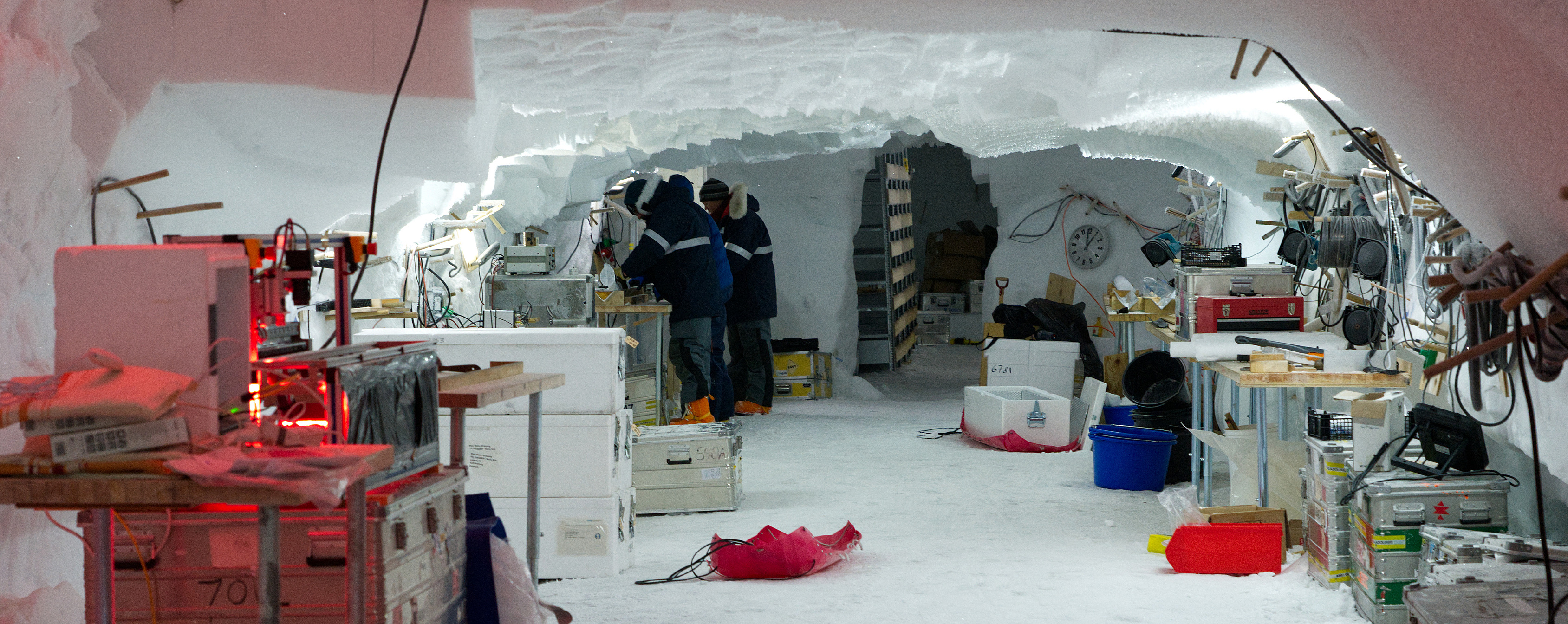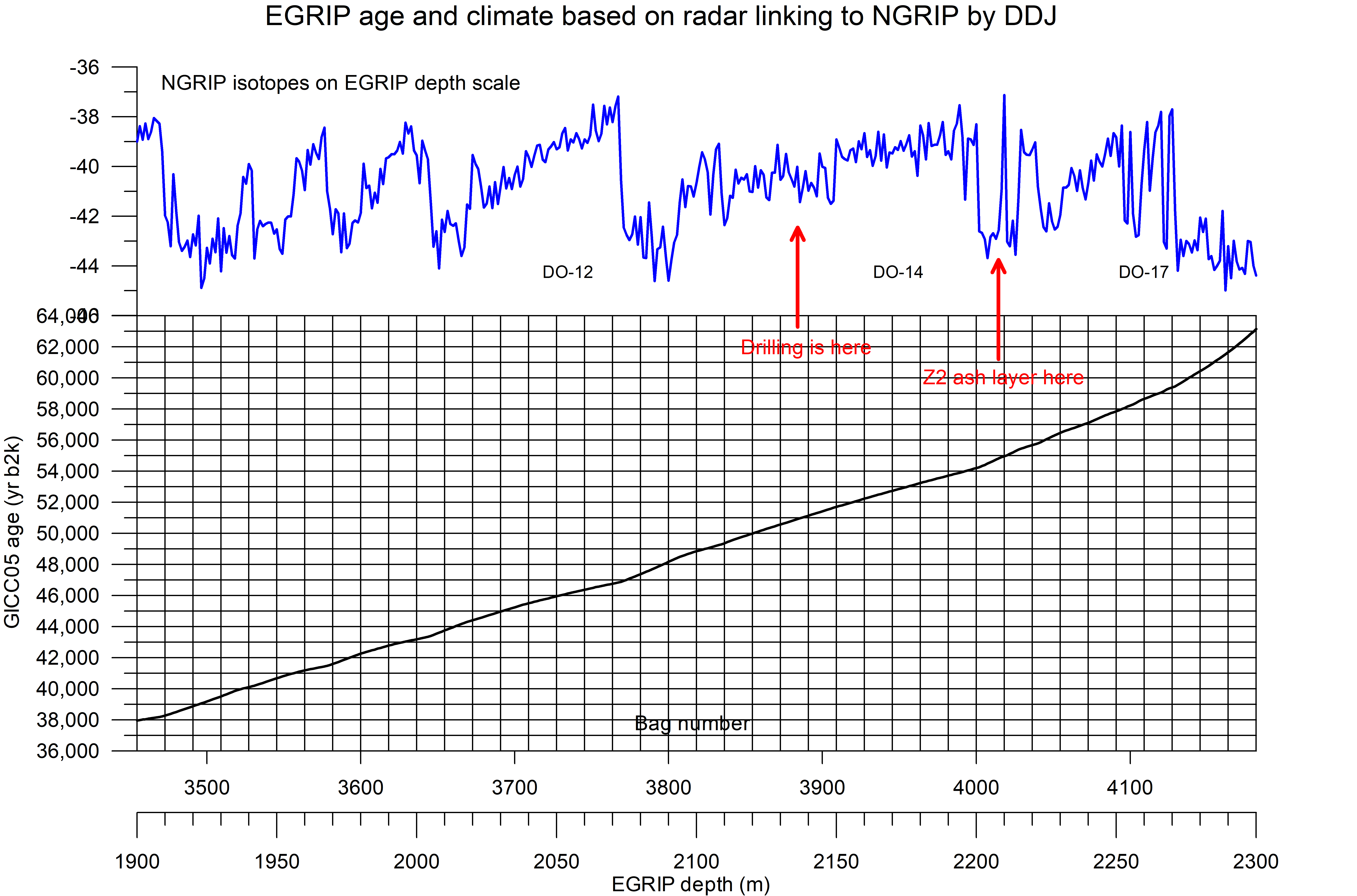
The functional science trench anno 2022. Compared to previous seasons this years setup is more modest with DEP, Swiss saw, ECM, linescan and packing.
July 14, 2022

The functional science trench anno 2022. Compared to previous seasons this years setup is more modest with DEP, Swiss saw, ECM, linescan and packing.
Drilling in an ice stream is likely to result in a climate profile that looks different from those drilled at the ice divide. Most of the deep Greenland ice cores are from the ice divide where the ice flow is mostly downwards and one can expect/hope to find well preserved stratigraphy reaching far back in time. In the ice stream, however, the deeper ice is either sliding over the bedrock, in case of bottom melting, and/or there is strong deformation of the ice close to bedrock. Therefore, one would not expect to find the deeper part of the record well preserved at EGRIP. At the present depth of some 2150 m, the ice is about 51,500 years old. This is known from tracing prominent radar layers – isochrones - between the EGRIP site and the sites of existing deep ice cores that are well dated. We can also recognize the characteristics of the glacial climate as we measure the ice core in the science trench. Eg at an age of 55,400 years (2215 m depth) we expect to see the visible ‘Z2’ ash layer that has its origin in Iceland and that is known as a prominent ash layer in the North Atlantic region. It is still an open question how far back in time the EGRIP stratigraphy is well preserved as radar linking is not possible in the deepest part of the ice sheet.
What we did today:
Weather today: Overcast, snowfall and snowdrift. In the evening, however, the wind died, a thick ground fog formed and visibility decreased to a few hundreds of meters. Temp. -10.4°C to -6.2°C. Wind: 6-12 kt mostly from NNE until 18L, then 0-2 kt from nowhere.
FL, Anders Svensson

The EGRIP time scale as predicted from matching of radar isochrones. The isotope curve in the top is from the NorthGRIP ice core but transferred to the EGRIP depth scale. We expect the EGRIP isotope profile to be similar in this depth interval.